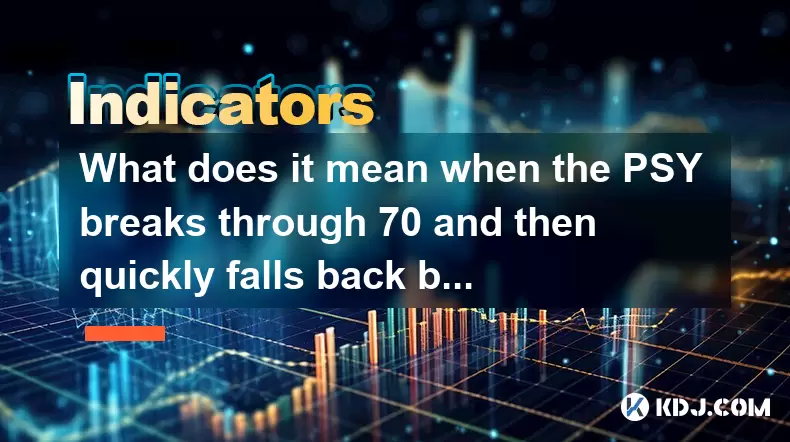-
 Bitcoin
Bitcoin $114800
-0.87% -
 Ethereum
Ethereum $4776
1.26% -
 XRP
XRP $3.035
-0.59% -
 Tether USDt
Tether USDt $0.9997
0.01% -
 BNB
BNB $868.3
-2.21% -
 Solana
Solana $207.8
2.24% -
 USDC
USDC $0.9999
0.00% -
 Dogecoin
Dogecoin $0.2321
-2.70% -
 TRON
TRON $0.3658
1.42% -
 Cardano
Cardano $0.9042
-1.85% -
 Chainlink
Chainlink $25.67
-0.24% -
 Hyperliquid
Hyperliquid $43.96
1.17% -
 Sui
Sui $3.679
-2.11% -
 Stellar
Stellar $0.4091
-1.83% -
 Ethena USDe
Ethena USDe $1.000
-0.01% -
 Bitcoin Cash
Bitcoin Cash $593.4
0.58% -
 Avalanche
Avalanche $25.53
0.89% -
 Hedera
Hedera $0.2476
-1.21% -
 Litecoin
Litecoin $119.7
-1.84% -
 UNUS SED LEO
UNUS SED LEO $9.609
0.34% -
 Toncoin
Toncoin $3.352
-0.91% -
 Shiba Inu
Shiba Inu $0.00001292
-2.45% -
 Uniswap
Uniswap $11.08
-1.13% -
 Polkadot
Polkadot $4.100
-1.09% -
 Cronos
Cronos $0.1609
4.53% -
 Dai
Dai $0.9999
0.00% -
 Bitget Token
Bitget Token $4.706
-0.88% -
 Aave
Aave $350.1
2.03% -
 Monero
Monero $268.0
0.06% -
 Ethena
Ethena $0.7069
-4.77%
What does it mean when the PSY breaks through 70 and then quickly falls back below 50?
When the PSY indicator breaks above 70 and rapidly drops below 50, it signals a sharp shift from bullish to bearish sentiment, often seen in crypto "pump and dump" scenarios—confirm with volume spikes and bearish candlestick patterns for stronger reversal signals.
Aug 13, 2025 at 11:35 am

Understanding the PSY Indicator in Cryptocurrency Trading
The PSY indicator, also known as the Psychological Line indicator, is a momentum oscillator used in technical analysis to measure the strength of market sentiment based on the number of trading periods where the closing price is higher than the previous period. Unlike indicators that rely on price magnitude, PSY focuses purely on the direction of price movement—whether it closed up or down. In the context of cryptocurrency trading, where volatility is high and sentiment shifts rapidly, the PSY indicator can offer insight into overbought or oversold conditions. The indicator typically ranges from 0 to 100, with 70 considered overbought and 30 regarded as oversold. When PSY crosses above 70, it suggests that a large majority of recent candles closed higher, signaling bullish enthusiasm. A rapid drop below 50 indicates a sudden shift in sentiment, where bearish momentum takes over.
What Happens When PSY Breaks Above 70?
When the PSY indicator breaks above 70, it reflects a strong bullish sentiment in the market. This means that in the selected lookback period—commonly 12 or 24 periods—more than 70% of the closing prices were higher than the prior close. In cryptocurrency markets, such a reading often occurs after a sharp rally driven by positive news, whale accumulation, or broader market momentum. While this can indicate strength, it may also suggest that the rally is overextended. Traders watch this level closely because sustained readings above 70 can precede a correction, especially if volume begins to decline or price fails to make new highs. The key signal arises not just from the breach of 70, but from how the market behaves immediately afterward.
Interpreting a Rapid Drop Below 50 After 70+
A rapid decline below 50 after a PSY reading above 70 is a significant shift in market psychology. A reading below 50 means that fewer than half of the recent periods closed higher, indicating that bearish periods now dominate. This swift reversal suggests that the initial bullish momentum has not only stalled but reversed with force. In crypto assets, such a pattern can occur during a "pump and dump" scenario, where coordinated buying pushes the price up quickly, triggering overbought conditions, followed by a sudden sell-off as early buyers take profits. The speed of the drop matters—a sharp fall from over 70 to under 50 within a few candles signals panic or capitulation among short-term holders. This behavior is often visible on intraday charts such as 1-hour or 4-hour timeframes during high-volatility events.
How to Confirm the Signal Using Volume and Price Action
To validate the significance of a PSY move from above 70 to below 50, traders should cross-verify with volume and price action. During the ascent above 70, volume should ideally be increasing, confirming participation in the rally. However, if volume starts to contract while PSY remains high, it hints at weakening momentum. The drop below 50 should ideally be accompanied by a surge in selling volume, particularly if it coincides with long red candles or bearish engulfing patterns. Additionally, check for divergence between price and PSY—if price makes a new high but PSY fails to surpass its prior peak, it's a hidden bearish divergence. Candlestick patterns such as shooting stars or bearish engulfing formations at resistance levels can further strengthen the reversal signal.
Step-by-Step Guide to Monitoring and Acting on This PSY Pattern
- Open your preferred cryptocurrency trading platform such as TradingView or Binance and load the chart of the asset you're analyzing
- Apply the PSY indicator from the studies menu, setting the period to 12 or 24 based on your trading style (shorter periods for scalping, longer for swing trading)
- Observe when the PSY line crosses above 70 and note the corresponding price action and volume
- Monitor closely for any rapid decline—if PSY drops below 60 within 2–3 candles and continues toward 50, prepare for a potential reversal
- Confirm the move with volume spikes on down candles and look for bearish candlestick patterns near key resistance levels
- Consider entering a short position or taking profits on longs if confirmation signals align, placing a stop-loss above the recent swing high
- Use additional tools like moving averages or RSI to filter false signals—e.g., if RSI also shows bearish divergence, the case strengthens
Common Misinterpretations and Risk Management
One common mistake is treating the PSY breakout above 70 as a standalone sell signal. In strong uptrends, PSY can remain above 70 for extended periods without reversing. The critical factor is the speed and context of the drop below 50. Another risk is ignoring the broader market environment—Bitcoin dominance, macro news, or exchange outages can distort PSY readings. Always apply position sizing and stop-loss orders when acting on PSY signals. For example, risk no more than 1–2% of your portfolio on a single trade based on this pattern. Backtesting this setup on historical data across various altcoins can help assess its reliability under different volatility regimes.Frequently Asked Questions
Q: Can the PSY indicator be used on all cryptocurrencies?
Yes, the PSY indicator can be applied to any cryptocurrency with sufficient trading volume and price history. It works best on assets that exhibit clear cyclical sentiment swings, such as Ethereum, Solana, or major altcoins. Low-volume or illiquid tokens may produce erratic PSY readings due to thin order books and price manipulation.Q: What timeframes are most effective for observing this PSY pattern?
The 1-hour and 4-hour charts are most effective for identifying meaningful PSY breakouts and reversals. On lower timeframes like 5-minute charts, noise can create false signals. Daily charts may capture broader trends but often miss rapid sentiment shifts common in crypto.Q: How does PSY differ from RSI?
While both are oscillators, PSY measures the proportion of up days, ignoring price change magnitude. RSI, on the other hand, considers the size of price gains and losses. This makes PSY more focused on pure market sentiment, whereas RSI incorporates volatility and momentum intensity.Q: Should I use PSY alone or combine it with other tools?
PSY should not be used in isolation. Combining it with volume analysis, support/resistance levels, and complementary indicators like MACD or moving averages increases accuracy. For instance, a PSY drop below 50 carries more weight if it occurs at a tested resistance level with high selling volume.
Disclaimer:info@kdj.com
The information provided is not trading advice. kdj.com does not assume any responsibility for any investments made based on the information provided in this article. Cryptocurrencies are highly volatile and it is highly recommended that you invest with caution after thorough research!
If you believe that the content used on this website infringes your copyright, please contact us immediately (info@kdj.com) and we will delete it promptly.
- Viral Memes, RWA Platforms, and DePIN Crushers: What's Hot in Crypto?
- 2025-08-24 14:45:20
- Meta's Hypernova Glasses: AR's Next Big Thing?
- 2025-08-24 15:05:15
- Down Under Showdown: Australia vs. South Africa in ODI Cricket
- 2025-08-24 15:10:14
- XYZVerse, Shiba Inu, and the 2025 Bull Cycle: A Meme Coin Evolution
- 2025-08-24 13:05:12
- WLFI Token, BingX, and the Trading Landscape: A New York Perspective
- 2025-08-24 12:45:20
- Aave, Governance, Allocation: Navigating DeFi's Shifting Sands
- 2025-08-24 12:45:20
Related knowledge

What does it mean when the +DI and -DI cross frequently in the DMI indicator but the ADX is flattening?
Aug 11,2025 at 03:15am
Understanding the DMI Indicator ComponentsThe Directional Movement Index (DMI) is a technical analysis tool composed of three lines: the +DI (Positive...

What does the sudden appearance of a "dark cloud cover" candlestick pattern during an uptrend indicate?
Aug 13,2025 at 11:35am
Understanding the 'Dark Cloud Cover' Candlestick PatternThe dark cloud cover is a bearish reversal pattern in technical analysis that typically appear...

What does it mean when the moving average, MACD, and RSI all send buy signals simultaneously?
Aug 11,2025 at 01:42pm
Understanding the Convergence of Technical IndicatorsWhen the moving average, MACD, and RSI all generate buy signals at the same time, traders interpr...

What does it mean when both the KDJ indicator and the RSI show overbought signals simultaneously?
Aug 13,2025 at 11:35am
Understanding the KDJ Indicator in Cryptocurrency TradingThe KDJ indicator is a momentum oscillator derived from the Stochastic Oscillator, widely use...

What does it mean when the price is trading above the SAR indicator but the red dots are densely packed?
Aug 09,2025 at 11:49pm
Understanding the SAR Indicator and Its Visual SignalsThe SAR (Parabolic Stop and Reverse) indicator is a technical analysis tool used primarily to de...

What does it mean when the candlestick chart forms a "Morning Star" but trading volume is sluggish?
Aug 12,2025 at 06:28pm
Understanding the Morning Star Candlestick PatternThe Morning Star is a three-candle bullish reversal pattern commonly observed in cryptocurrency pric...

What does it mean when the +DI and -DI cross frequently in the DMI indicator but the ADX is flattening?
Aug 11,2025 at 03:15am
Understanding the DMI Indicator ComponentsThe Directional Movement Index (DMI) is a technical analysis tool composed of three lines: the +DI (Positive...

What does the sudden appearance of a "dark cloud cover" candlestick pattern during an uptrend indicate?
Aug 13,2025 at 11:35am
Understanding the 'Dark Cloud Cover' Candlestick PatternThe dark cloud cover is a bearish reversal pattern in technical analysis that typically appear...

What does it mean when the moving average, MACD, and RSI all send buy signals simultaneously?
Aug 11,2025 at 01:42pm
Understanding the Convergence of Technical IndicatorsWhen the moving average, MACD, and RSI all generate buy signals at the same time, traders interpr...

What does it mean when both the KDJ indicator and the RSI show overbought signals simultaneously?
Aug 13,2025 at 11:35am
Understanding the KDJ Indicator in Cryptocurrency TradingThe KDJ indicator is a momentum oscillator derived from the Stochastic Oscillator, widely use...

What does it mean when the price is trading above the SAR indicator but the red dots are densely packed?
Aug 09,2025 at 11:49pm
Understanding the SAR Indicator and Its Visual SignalsThe SAR (Parabolic Stop and Reverse) indicator is a technical analysis tool used primarily to de...

What does it mean when the candlestick chart forms a "Morning Star" but trading volume is sluggish?
Aug 12,2025 at 06:28pm
Understanding the Morning Star Candlestick PatternThe Morning Star is a three-candle bullish reversal pattern commonly observed in cryptocurrency pric...
See all articles

























































































